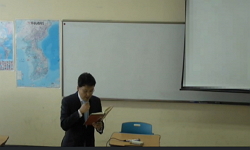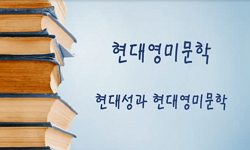본 연구는 1950년대 후반부터 1967년 유일사상체계가 확립되기 이전 기간 북한의 음악문화를 당시 전개된 천리마운동과의 연관 속에서 고찰한다. 이를 통해 천리마운동 당시 음악이 수행한 역...
http://chineseinput.net/에서 pinyin(병음)방식으로 중국어를 변환할 수 있습니다.
변환된 중국어를 복사하여 사용하시면 됩니다.
- 中文 을 입력하시려면 zhongwen을 입력하시고 space를누르시면됩니다.
- 北京 을 입력하시려면 beijing을 입력하시고 space를 누르시면 됩니다.
https://www.riss.kr/link?id=T17079196
- 저자
-
발행사항
서울 : 중앙대학교 대학원, 2024
-
학위논문사항
학위논문(박사) -- 중앙대학교 대학원 , 문화연구학과 문화이론전공 , 2024. 8
-
발행연도
2024
-
작성언어
한국어
-
주제어
북한 음악 ; 천리마운동 ; 1950-60년대 ; 사회주의 리얼리즘 ; 당-국가 ; 음악 창작 ; 음악 수용 ; 민족적 특성 ; 현대성 ; 가극 ; 창극 ; 군중가요 ; 노래부르기 실천 ; 음악 써클 ; North Korean Music ; Chollima Movement ; 1950s-60s ; Socialist Realism ; Party-state ; Music Creation ; Music Reception ; National Characteristics ; Contemporaneity ; Opera ; Changgeuk ; Mass Songs ; Singing Practice ; Music Circles
-
발행국(도시)
서울
-
기타서명
North Korean music culture during the Chollima movement in the late 1950s to 1960s
-
형태사항
v, 317 p. : 삽화, 도표 ; 26 cm
-
일반주기명
중앙대학교 논문은 저작권에 의해 보호받습니다
지도교수: 주은우
참고문헌수록 -
UCI식별코드
I804:11052-000000242764
- DOI식별코드
- 소장기관
-
0
상세조회 -
0
다운로드
부가정보
국문 초록 (Abstract)
전후 복구 건설을 마무리한 뒤 1957년 북한이 본격적인 사회주의 경제 건설에 나서며 시작된 천리마운동은 최대한의 절약과 증산을 목표로 한 대중운동이었다. 그러면서도 천리마운동의 전개는 정치적인 측면에서 당과 대중의 통일 단결 및 당-정 관계의 변화 속에서 강화된 당적 지도 및 통제가 전 사회적으로 확산되어 간 과정이기도 했다. 당을 중심으로 한 통일 단결의 요구는 당적 사상 체계, 당적 지도 체계의 확립이라는 이름으로 구체화되었고, 이와 같은 당적 우위 체제의 수립은 음악 생산 체계에 대한 당-국가의 통제 방식에도 큰 변화를 야기했다. 음악인들의 조직으로서의 작곡가동맹은 동맹 내 질서와 규율을 강화시키며 통일된 당적 음악가 조직으로 변모해갔고, 음악작품을 통한 당 정책의 구현 문제도 본격적으로 제기되었다. 이로 인해 당 정책을 신속히 반영하는 전투적 장르로서의 군중가요의 역할이 부각되었으며 가극과 창극 등 극 음악 장르들에서도 혁명전통과 천리마 기수 등 당면한 현실을 주제로 다뤄야 한다는 요구가 위로부터 가해졌다.
음악 상연 단체로서의 중앙 및 지방 극장들 역시 조직 운영 체계를 정비하고 극장 사업에서 규율과 질서를 강화할 것을 요구받았다. 특히 극장 레퍼토리의 양적 증대 및 질적 제고 문제에 있어서는 공장·기업소 등 생산현장에서의 비용 절감 및 생산성 증대, 생산품의 질 제고에 관한 당적 지도 및 통제 방침이 유사하게 적용되었다. 또한 1959년 천리마운동이 천리마작업반운동으로 발전하며 전 사회적 운동으로 확대되면서 음악 단체들도 예외없이 천리마창작단운동 참가에 나서게 되었다.
이처럼 천리마운동 시기 강화된 당적 지도 및 통제는 레닌적 당성 원칙의 강화라는 사회주의 리얼리즘의 개념을 통해 음악인들에게 받아들여졌다. 해방 직후 소련에서 도입되어 북한의 문예노선으로 공식화된 사회주의 리얼리즘 창작 원칙은 사회주의 건설에 나선 대중들을 교양하고 고무 추동하는 것을 문예의 기본 임무로 상정하고 있었다. 그러면서 그것은 음악 창작 및 분석을 위한 구체적인 방법론이기도 했는데, 음악이 내용(사상)을 표현하도록 하기 위해 소련 음악계가 고안한 이 방법론은 음악적 전문성을 바탕으로 심포니나 오페라 등 서구 고전예술음악 장르들을 주요 대상으로 하고 있었다. 이러한 사회주의 리얼리즘 창작 방법론은 해방 이후 북한 음악인들에 의해 적극적으로 수용, 학습되었다. 그리고 이들은 음악 창작과 관련한 당-국가로부터의 지시 및 요구들에 대해 이 사회주의 리얼리즘 원칙을 통해 이해하고 받아들였다.
천리마운동 시기 음악 창작과 관련해 위로부터 제기된 핵심적 요구는 음악에서의 ‘주체’의 확립에 관한 것이었다. 1955년 12월 김일성이 제기한 사상사업에서의 주체 확립 문제는 이 시기 문예 창작 활동의 총 방향을 규정하는 지침이 되고 있었다. 음악에서의 주체 확립에서의 관건은 민족음악 유산의 계승 발전 문제에 놓여 있었는데, 이에 대해 현대음악과 민족음악은 각각 ‘민족적 특성’의 강화와 ‘현대성’ 구현이라는 사회주의 리얼리즘의 프레임을 통해 이 주체 확립 문제에 대한 해결방안을 모색해 갔다.
현대음악에서의 ‘민족적 특성’은 음조(인또나찌야)에서 민족적 색채를 발양하는 문제로 초점이 모아졌다. 이는 음악이 ‘인또나찌야의 예술’이라는 사회주의 리얼리즘 원칙에 기반한 인식을 토대로 한 것으로, 민요 등 민족음악 유산의 음조를 도입해 이를 유기적으로 가공 발전시키는(심포니즘) 문제와도 직접적으로 결부되었다. 북한 음악계는 천리마운동 기간 창작된 가극 등 다양한 장르의 작품들과 음악무용서사시 등 새롭게 ‘개척’된 장르들에 대해 자신들의 음악적 전문성을 배경으로 사회주의 리얼리즘 원칙에 입각해 이 작품들을 정의, 해석, 평가하는 데 있어 주도적 역할을 담당했다.
한편 민족음악에서의 ‘현대성’ 구현의 문제는, 화성화를 포함한 근대적(서구적) 표현수단들의 도입을 통해 민족음악을 현대적으로 발전시키는 것을 의미했는데, 기존의 창극 장르를 현대화된 음악극으로 발전시키기 위한 노력들을 중심으로 전개되었다. 이를 위해 기성 창극 배우들이 내는 ‘탁성’을 제거하고 성부를 구분하며 민족악기를 개량해 평균율을 도입하는 등 민족음악의 근대화 과정이 천리마운동 기간 이어졌다. 1960년대 들어 창극은 북한에서 역사적 종말을 고하게 되었으며 현대화된 민요극 양식들이 민족가극의 이름으로 이를 대신했다.
마지막으로 음악 수용의 측면에서, 천리마운동이 전개된 1950년대 후반부터 1960년대 기간은 음악에 관한 대중들의 요구가 가장 적극적이고 왕성하게 표출된 시기였다. 이 시기 북한 대중들의 음악 생활은 노래를 중심으로 이루어졌는데, 감상보다는 가창 실천이 중심이 되었다. 수용자 대중들의 노래에 관한 요구에 있어 가장 핵심은 자신들의 생활을 노래에 담아달라는 것이었다. 모든 산업과 직종에서 제각기 ‘우리의 노래’를 달라는 요구가 천리마운동 기간 내내 빗발쳤는데, 이는 노래가 이들에게 자신들이 담당하는 노동 부문에 대한 자부심과 영예를 표출하고 인정받는 수단으로 여겨졌음을 의미했다.
천리마운동 시기 북한 대중들은 수용자의 지위에만 머문 것이 아니라 다양한 음악활동에 참가했으며 심지어 창작 활동에도 직접 나서도록 장려되었다. 해방 직후부터 군중문화사업의 일환으로 문예써클들이 광범위하게 조직되었고 이에 대한 지원도 꾸준히 제공되었다. 천리마운동 시기에 접어들며 써클 활동은 생산 활동과 보다 긴밀하게 연계되었고, 군중 창작 운동이 본격적으로 전개되면서 군중들 속에서 많은 신인 작곡가가 배출되었다.
본 연구는 1950년대 후반부터 1967년 유일사상체계가 확립되기 이전 기간 북한의 음악문화를 당시 전개된 천리마운동과의 연관 속에서 고찰한다. 이를 통해 천리마운동 당시 음악이 수행한 역할에 관해 살펴보는 한편, 천리마운동이 북한 음악문화의 형성 및 변화 과정에 미친 영향을 검토하고자 한다. 본 연구에서 사용하는 ‘음악문화’의 용어는, 음악의 생산(창작)과 수용, 그리고 국가의 관리 및 통제를 포괄하기 위한 개념이다. 천리마운동 시기 음악 생산 및 보급 체계에 대한 당-국가의 통제가 어떻게 이루어졌는지, 어떤 음악작품들이 창작되었고 어떠한 원칙을 통해 창작이 진행되었는지, 그리고 대중들의 음악 수용 양상은 어떠했는지를 각각 검토함으로써 이 시기 북한의 음악에 관해 포괄적이고 입체적으로 바라보고자 하는 의도이다. 또한 본 연구는 유일사상체계 확립 이후 지금까지 북한 음악을 정의하는 대표적 개념인 이른바 ‘주체음악’이 등장하기 이전 시기 북한 음악의 존재 양상을 살펴봄으로써 주체음악 자체를 보다 역사적인 시각으로 바라보는 데 기여하고자 한다.
전후 복구 건설을 마무리한 뒤 1957년 북한이 본격적인 사회주의 경제 건설에 나서며 시작된 천리마운동은 최대한의 절약과 증산을 목표로 한 대중운동이었다. 그러면서도 천리마운동의 전개는 정치적인 측면에서 당과 대중의 통일 단결 및 당-정 관계의 변화 속에서 강화된 당적 지도 및 통제가 전 사회적으로 확산되어 간 과정이기도 했다. 당을 중심으로 한 통일 단결의 요구는 당적 사상 체계, 당적 지도 체계의 확립이라는 이름으로 구체화되었고, 이와 같은 당적 우위 체제의 수립은 음악 생산 체계에 대한 당-국가의 통제 방식에도 큰 변화를 야기했다. 음악인들의 조직으로서의 작곡가동맹은 동맹 내 질서와 규율을 강화시키며 통일된 당적 음악가 조직으로 변모해갔고, 음악작품을 통한 당 정책의 구현 문제도 본격적으로 제기되었다. 이로 인해 당 정책을 신속히 반영하는 전투적 장르로서의 군중가요의 역할이 부각되었으며 가극과 창극 등 극 음악 장르들에서도 혁명전통과 천리마 기수 등 당면한 현실을 주제로 다뤄야 한다는 요구가 위로부터 가해졌다.
음악 상연 단체로서의 중앙 및 지방 극장들 역시 조직 운영 체계를 정비하고 극장 사업에서 규율과 질서를 강화할 것을 요구받았다. 특히 극장 레퍼토리의 양적 증대 및 질적 제고 문제에 있어서는 공장·기업소 등 생산현장에서의 비용 절감 및 생산성 증대, 생산품의 질 제고에 관한 당적 지도 및 통제 방침이 유사하게 적용되었다. 또한 1959년 천리마운동이 천리마작업반운동으로 발전하며 전 사회적 운동으로 확대되면서 음악 단체들도 예외없이 천리마창작단운동 참가에 나서게 되었다.
이처럼 천리마운동 시기 강화된 당적 지도 및 통제는 레닌적 당성 원칙의 강화라는 사회주의 리얼리즘의 개념을 통해 음악인들에게 받아들여졌다. 해방 직후 소련에서 도입되어 북한의 문예노선으로 공식화된 사회주의 리얼리즘 창작 원칙은 사회주의 건설에 나선 대중들을 교양하고 고무 추동하는 것을 문예의 기본 임무로 상정하고 있었다. 그러면서 그것은 음악 창작 및 분석을 위한 구체적인 방법론이기도 했는데, 음악이 내용(사상)을 표현하도록 하기 위해 소련 음악계가 고안한 이 방법론은 음악적 전문성을 바탕으로 심포니나 오페라 등 서구 고전예술음악 장르들을 주요 대상으로 하고 있었다. 이러한 사회주의 리얼리즘 창작 방법론은 해방 이후 북한 음악인들에 의해 적극적으로 수용, 학습되었다. 그리고 이들은 음악 창작과 관련한 당-국가로부터의 지시 및 요구들에 대해 이 사회주의 리얼리즘 원칙을 통해 이해하고 받아들였다.
천리마운동 시기 음악 창작과 관련해 위로부터 제기된 핵심적 요구는 음악에서의 ‘주체’의 확립에 관한 것이었다. 1955년 12월 김일성이 제기한 사상사업에서의 주체 확립 문제는 이 시기 문예 창작 활동의 총 방향을 규정하는 지침이 되고 있었다. 음악에서의 주체 확립에서의 관건은 민족음악 유산의 계승 발전 문제에 놓여 있었는데, 이에 대해 현대음악과 민족음악은 각각 ‘민족적 특성’의 강화와 ‘현대성’ 구현이라는 사회주의 리얼리즘의 프레임을 통해 이 주체 확립 문제에 대한 해결방안을 모색해 갔다.
현대음악에서의 ‘민족적 특성’은 음조(인또나찌야)에서 민족적 색채를 발양하는 문제로 초점이 모아졌다. 이는 음악이 ‘인또나찌야의 예술’이라는 사회주의 리얼리즘 원칙에 기반한 인식을 토대로 한 것으로, 민요 등 민족음악 유산의 음조를 도입해 이를 유기적으로 가공 발전시키는(심포니즘) 문제와도 직접적으로 결부되었다. 북한 음악계는 천리마운동 기간 창작된 가극 등 다양한 장르의 작품들과 음악무용서사시 등 새롭게 ‘개척’된 장르들에 대해 자신들의 음악적 전문성을 배경으로 사회주의 리얼리즘 원칙에 입각해 이 작품들을 정의, 해석, 평가하는 데 있어 주도적 역할을 담당했다.
한편 민족음악에서의 ‘현대성’ 구현의 문제는, 화성화를 포함한 근대적(서구적) 표현수단들의 도입을 통해 민족음악을 현대적으로 발전시키는 것을 의미했는데, 기존의 창극 장르를 현대화된 음악극으로 발전시키기 위한 노력들을 중심으로 전개되었다. 이를 위해 기성 창극 배우들이 내는 ‘탁성’을 제거하고 성부를 구분하며 민족악기를 개량해 평균율을 도입하는 등 민족음악의 근대화 과정이 천리마운동 기간 이어졌다. 1960년대 들어 창극은 북한에서 역사적 종말을 고하게 되었으며 현대화된 민요극 양식들이 민족가극의 이름으로 이를 대신했다.
마지막으로 음악 수용의 측면에서, 천리마운동이 전개된 1950년대 후반부터 1960년대 기간은 음악에 관한 대중들의 요구가 가장 적극적이고 왕성하게 표출된 시기였다. 이 시기 북한 대중들의 음악 생활은 노래를 중심으로 이루어졌는데, 감상보다는 가창 실천이 중심이 되었다. 수용자 대중들의 노래에 관한 요구에 있어 가장 핵심은 자신들의 생활을 노래에 담아달라는 것이었다. 모든 산업과 직종에서 제각기 ‘우리의 노래’를 달라는 요구가 천리마운동 기간 내내 빗발쳤는데, 이는 노래가 이들에게 자신들이 담당하는 노동 부문에 대한 자부심과 영예를 표출하고 인정받는 수단으로 여겨졌음을 의미했다.
천리마운동 시기 북한 대중들은 수용자의 지위에만 머문 것이 아니라 다양한 음악활동에 참가했으며 심지어 창작 활동에도 직접 나서도록 장려되었다. 해방 직후부터 군중문화사업의 일환으로 문예써클들이 광범위하게 조직되었고 이에 대한 지원도 꾸준히 제공되었다. 천리마운동 시기에 접어들며 써클 활동은 생산 활동과 보다 긴밀하게 연계되었고, 군중 창작 운동이 본격적으로 전개되면서 군중들 속에서 많은 신인 작곡가가 배출되었다.
다국어 초록 (Multilingual Abstract)
The Chollima Movement, initiated in 1957 as North Korea embarked on full-scale socialist economic construction following the completion of post-war reconstruction, was a mass movement aimed at maximizing savings and production. Politically, the movement entailed expanded Party leadership and control across society, emphasizing party-mass unity and changed Party-state relations. The demand for unity centered around the Party materialized into the establishment of "the Party ideological rule" and "the Party guiding rule," significantly transforming the Party-state's control over music production. The Composers' Union became a unified Party organization with strengthened order and discipline, and the implementation of Party policies through musical works became its significant task. This era highlighted the role of mass songs in reflecting Party policies and demanded that theatrical music genres, such as operas and changgeuk (traditional musical dramas), address themes like the revolutionary traditions of the 1930s and the realities of the Chollima riders.
Central and local theaters, as music performance groups, were also required to strengthen discipline and order in their theatrical activities. In particular, regarding the quantitative increase and qualitative improvement of theater repertoires, the Party's guidance and control policies on cost reduction, productivity enhancement, and quality improvement of production in factories and enterprises were applied similarly. As the Chollima Movement developed into the Chollima Work-group Movement in 1959 and expanded into a nationwide movement, musicians were also required to participate in it.
During the Movement, the Party's enhanced guidance and control were accepted by musicians through the concept of socialist realism, which emphasized Leninist Party principles. Socialist realism, introduced from the Soviet Union after liberation and formalized as North Korea's literary and artistic policy, posited the basic task of literature and art as educating and motivating the masses engaged in socialist construction. It was also a specific methodology for musical creation and analysis, targeting Western classical music genres like symphonies and operas. North Korean musicians actively accepted and learned this Soviet socialist realism in music after liberation, interpreting Party-state directives and demands through this principle.
A critical demand during the Movement was to establish "Juche" in music. Kim Il-sung's 1955 directive on Juche in ideological work served as a guideline defining the overall direction of literary and artistic activities during this period. The critical aspect of establishing Juche in music lay in inheriting and developing the national music heritage. Modern (Western) and national (traditional) music sought solutions to this issue within the socialist realist framework, emphasizing the reinforcement of "national characteristics" and the realization of "contemporaneity," respectively.
In modern music, the focus on "national characteristics" was on expressing national colors through the "intonazia" (musical intonation) of national music heritage, like folk songs. This understanding was based on the socialist realism principle that music is "the art of intonazia," directly tied to the concept of "symphonism," which means incorporating and organically developing the intonazia. During the Movement, North Korean musicians played a leading role in defining, interpreting, and evaluating various genres of musical works created, including operas and newly "pioneered" genres like "Music and Dance Epics," based on socialist realism and their musical expertise.
Regarding the realization of "contemporaneity" in national music, this meant developing national music by incorporating modern (Western) elements of musical expression, including harmonization. Efforts to modernize existing changgeuk genres into contemporary musical dramas were central to this. The modernization process of national music, including removing the "takseong" (raspy voice) of traditional changgeuk actors, separating vocal parts, and improving national instruments to introduce equal temperament, continued during the Movement. By the 1960s, changgeuk eventually came to an end, replaced by modernized folk operas under the name of Minjok gageuk (national operas).
Lastly, regarding music reception, the late 1950s to the 1960s, during the Chollima Movement, was a period when public demand for music was most active and vigorous. North Korean people's music life during this period centered on singing rather than listening. The core demand of the public regarding songs was to have their lives reflected in them. Throughout the Movement, there were continuous demands from all industries and occupations for "our song," indicating that songs were seen as a means to express and gain recognition for their pride and honor in their labor.
During the Chollima Movement, North Korean people did not remain mere recipients but participated in various musical activities and were even encouraged to engage in creation. Literary and artistic circles were widely organized as part of mass cultural projects since liberation, and support for them was consistently provided. As the Movement progressed, circle activities became more closely linked with production activities, and the mass creation movement was fully developed, leading to the emergence of many new composers from among the masses.
This study explores North Korea's music culture from the late 1950s until just before the declaration of the "monolithic ideological rule of the Party" in 1967, within the context of the Chollima Movement. By investigating the role music played during...
This study explores North Korea's music culture from the late 1950s until just before the declaration of the "monolithic ideological rule of the Party" in 1967, within the context of the Chollima Movement. By investigating the role music played during the Movement and its impact on the formation and transformation of North Korean music culture, this study aims to provide a comprehensive understanding of the music culture of this era. The term "music culture" encompasses music production (creation), reception, and the Party-state's control. This research scrutinizes the Party-state's control over the music production and distribution, the types of musical works created, the principles guiding their creation, and the way people received music and practiced it in their daily lives, thereby offering a multi-dimensional view of North Korean music during this period. Additionally, by examining North Korean music before the advent of "Juche Music," a concept that has defined North Korean music since the establishment of the monolithic ideological rule of the Party, this study contributes to a historical perspective on Juche Music.
The Chollima Movement, initiated in 1957 as North Korea embarked on full-scale socialist economic construction following the completion of post-war reconstruction, was a mass movement aimed at maximizing savings and production. Politically, the movement entailed expanded Party leadership and control across society, emphasizing party-mass unity and changed Party-state relations. The demand for unity centered around the Party materialized into the establishment of "the Party ideological rule" and "the Party guiding rule," significantly transforming the Party-state's control over music production. The Composers' Union became a unified Party organization with strengthened order and discipline, and the implementation of Party policies through musical works became its significant task. This era highlighted the role of mass songs in reflecting Party policies and demanded that theatrical music genres, such as operas and changgeuk (traditional musical dramas), address themes like the revolutionary traditions of the 1930s and the realities of the Chollima riders.
Central and local theaters, as music performance groups, were also required to strengthen discipline and order in their theatrical activities. In particular, regarding the quantitative increase and qualitative improvement of theater repertoires, the Party's guidance and control policies on cost reduction, productivity enhancement, and quality improvement of production in factories and enterprises were applied similarly. As the Chollima Movement developed into the Chollima Work-group Movement in 1959 and expanded into a nationwide movement, musicians were also required to participate in it.
During the Movement, the Party's enhanced guidance and control were accepted by musicians through the concept of socialist realism, which emphasized Leninist Party principles. Socialist realism, introduced from the Soviet Union after liberation and formalized as North Korea's literary and artistic policy, posited the basic task of literature and art as educating and motivating the masses engaged in socialist construction. It was also a specific methodology for musical creation and analysis, targeting Western classical music genres like symphonies and operas. North Korean musicians actively accepted and learned this Soviet socialist realism in music after liberation, interpreting Party-state directives and demands through this principle.
A critical demand during the Movement was to establish "Juche" in music. Kim Il-sung's 1955 directive on Juche in ideological work served as a guideline defining the overall direction of literary and artistic activities during this period. The critical aspect of establishing Juche in music lay in inheriting and developing the national music heritage. Modern (Western) and national (traditional) music sought solutions to this issue within the socialist realist framework, emphasizing the reinforcement of "national characteristics" and the realization of "contemporaneity," respectively.
In modern music, the focus on "national characteristics" was on expressing national colors through the "intonazia" (musical intonation) of national music heritage, like folk songs. This understanding was based on the socialist realism principle that music is "the art of intonazia," directly tied to the concept of "symphonism," which means incorporating and organically developing the intonazia. During the Movement, North Korean musicians played a leading role in defining, interpreting, and evaluating various genres of musical works created, including operas and newly "pioneered" genres like "Music and Dance Epics," based on socialist realism and their musical expertise.
Regarding the realization of "contemporaneity" in national music, this meant developing national music by incorporating modern (Western) elements of musical expression, including harmonization. Efforts to modernize existing changgeuk genres into contemporary musical dramas were central to this. The modernization process of national music, including removing the "takseong" (raspy voice) of traditional changgeuk actors, separating vocal parts, and improving national instruments to introduce equal temperament, continued during the Movement. By the 1960s, changgeuk eventually came to an end, replaced by modernized folk operas under the name of Minjok gageuk (national operas).
Lastly, regarding music reception, the late 1950s to the 1960s, during the Chollima Movement, was a period when public demand for music was most active and vigorous. North Korean people's music life during this period centered on singing rather than listening. The core demand of the public regarding songs was to have their lives reflected in them. Throughout the Movement, there were continuous demands from all industries and occupations for "our song," indicating that songs were seen as a means to express and gain recognition for their pride and honor in their labor.
During the Chollima Movement, North Korean people did not remain mere recipients but participated in various musical activities and were even encouraged to engage in creation. Literary and artistic circles were widely organized as part of mass cultural projects since liberation, and support for them was consistently provided. As the Movement progressed, circle activities became more closely linked with production activities, and the mass creation movement was fully developed, leading to the emergence of many new composers from among the masses.
목차 (Table of Contents)
- 제1장 서론 1
- 제1절 문제제기 및 연구목표 1
- 제2절 천리마운동의 전개 과정 및 특성 9
- 제3절 선행연구 검토 17
- 제4절 연구방법론 및 연구자료 21
- 제1장 서론 1
- 제1절 문제제기 및 연구목표 1
- 제2절 천리마운동의 전개 과정 및 특성 9
- 제3절 선행연구 검토 17
- 제4절 연구방법론 및 연구자료 21
- 제2장 당-국가에 의한 음악 생산보급 체계의 관리 및 통제 28
- 제1절 해방 후 북한 음악 생산보급 체계의 조직 29
- 1. 해방 후부터 한국전쟁 이전 (1945.8.15.~1950.6.25) 29
- 2. 한국전쟁 시기 (1950.6.25.~1953.7) 39
- 3. 정전 후 천리마운동 이전 (1953.7.27.~1956.12) 40
- 제2절 당적 사상 체계의 확립과 음악을 통한 당 정책의 구현 48
- 1. 1957년 제2차 조선작곡가대회의 계획과 무산 48
- 2. 당적 사상 체계, 당적 지도 체계의 확립 51
- 3. 음악 작품을 통한 당 정책의 구현 및 문예조직 개편 60
- 4. 당의 문예정책과 음악에 관한 김일성 교시 68
- 제3절 음악 생산 및 보급 체계에 대한 관리 및 통제 74
- 1. 음악 생산 및 보급 조직으로서의 극장 창조 집단 74
- 2. <극장 예술 기준 창조 준칙>의 제정과 레퍼토리 확보 문제 76
- 3. 레퍼토리의 질 제고 문제 및 당적 지도 체계의 확립 82
- 4. 천리마창작단운동의 전개 90
- 제4절 소결 97
- 제3장 천리마 시대 음악작품 창작과 사회주의 리얼리즘 원칙 101
- 제1절 사회주의 리얼리즘의 음악적 적용 104
- 1. 소련 음악에서의 사회주의 리얼리즘 원칙 104
- 2. 북한 음악계의 구성 및 사회주의 리얼리즘의 수용 113
- 제2절 현대음악에서의 '민족적 특성' 124
- 1. 소련을 향해 배우기: 심포니즘과 민족적 인또나찌야의 발양 124
- 2. 현대음악에서의 주체 확립의 문제 130
- 3. 가극에서의 현대적 테마와 새로운 음악 장르의 개척 138
- 4. 가극 음악 극작술의 합법칙성 154
- 제3절 민족음악에서의 '현대성' 163
- 1. 탁성 논쟁 및 창극의 음악적 정의 163
- 2. 창극의 민요화 및 현대적 주제의 도입 174
- 3. 1962년 3월 11일 교시와 창극의 소멸 187
- 제4절 소결 197
- 제4장 인민대중들의 음악 생활 및 음악 수용 양상 202
- 제1절 군중가요, 선전선동의 수단이자 인민 생활의 친근한 동반자 204
- 1. 해방 후 군중가요의 창작 및 보급 204
- 2. 천리마운동 시기 군중가요: 천리마 현실을 반영한 노래 211
- 3. 군중가요의 사회교양자적 역할 vs. 대중성 216
- 제2절 인민대중들의 음악 활동 참여 224
- 1. 해방 후 써클 활동의 조직 224
- 2. 천리마운동 시기 음악 써클: 생산 활동과의 밀접한 연계 227
- 3. 군중 창작 운동 및 써클 음악에서의 민족적 특성의 강화 233
- 제3절 음악에 관한 대중들의 요구 및 노래부르기 실천의 의미 240
- 1. 자기 생활을 반영한 노래 244
- 2. 대중들의 음악적 취향: 직종별, 세대별, 성별 차이 254
- 3. 부르기 쉬운 노래 261
- 4. 노래부르기 실천과 자기 규율 268
- 제4절 소결 276
- 제5장 결론 281
- 참고문헌 288
- 국문초록 312
- Abstract 315












